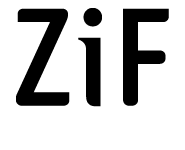Science and its Public after the Pandemic
- Jun 9, 2020
- Institutsnachrichten
- Dept. Daston
- Lorraine Daston
 "Who would have thought it? People all over the world, most of whom had happily forgotten whatever they’d learned about science and mathematics in school, were suddenly tuning into broadcasts and podcasts by virologists, epidemiologists, physicians, and geneticists, following the Twitter feed of doctors and nurses on duty in intensive care units, and obsessively washing their hands as they sung “Happy Birthday” (twice) under their breaths. They willingly, indeed avidly listened to explanations of R0, exponential curves, case/fatality ratios, and many other concepts that would have put them to sleep in seconds only a few weeks before. The Johns Hopkins University Coronavirus Resource Center website, bristling with maps and graphs and data, was bookmarked on hundreds of thousands of computers. Heads of state gave press conferences flanked by scientists, to whom they regularly deferred, and promised to be guided in their decisions about how to fight the new virus by “science and the data.” All the hand-wringing discussions about the growing distrust of science as evidenced by climate-change deniers and vaccine objectors vanished almost overnight from the airwaves and the newspapers. Terrified by the specter of the COVID-19 pandemic, the public looked to science for its salvation. Is this too good to last? Should it last? What do science and the public stand to lose and gain from their intense interactions during the pandemic?"
"Who would have thought it? People all over the world, most of whom had happily forgotten whatever they’d learned about science and mathematics in school, were suddenly tuning into broadcasts and podcasts by virologists, epidemiologists, physicians, and geneticists, following the Twitter feed of doctors and nurses on duty in intensive care units, and obsessively washing their hands as they sung “Happy Birthday” (twice) under their breaths. They willingly, indeed avidly listened to explanations of R0, exponential curves, case/fatality ratios, and many other concepts that would have put them to sleep in seconds only a few weeks before. The Johns Hopkins University Coronavirus Resource Center website, bristling with maps and graphs and data, was bookmarked on hundreds of thousands of computers. Heads of state gave press conferences flanked by scientists, to whom they regularly deferred, and promised to be guided in their decisions about how to fight the new virus by “science and the data.” All the hand-wringing discussions about the growing distrust of science as evidenced by climate-change deniers and vaccine objectors vanished almost overnight from the airwaves and the newspapers. Terrified by the specter of the COVID-19 pandemic, the public looked to science for its salvation. Is this too good to last? Should it last? What do science and the public stand to lose and gain from their intense interactions during the pandemic?"
Lorraine Daston für den Blog des Zentrums für interdisziplinäre Forschung der Universität Bielefeld.
